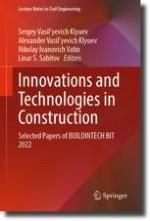2023 | OriginalPaper | Buchkapitel
Light-Colored Ceramic Products from Red-Burning Clay Raw Materials
verfasst von : A. A. Naumov, I. V. Maltseva
Erschienen in: Innovations and Technologies in Construction
Aktivieren Sie unsere intelligente Suche, um passende Fachinhalte oder Patente zu finden.
Wählen Sie Textabschnitte aus um mit Künstlicher Intelligenz passenden Patente zu finden. powered by
Markieren Sie Textabschnitte, um KI-gestützt weitere passende Inhalte zu finden. powered by
